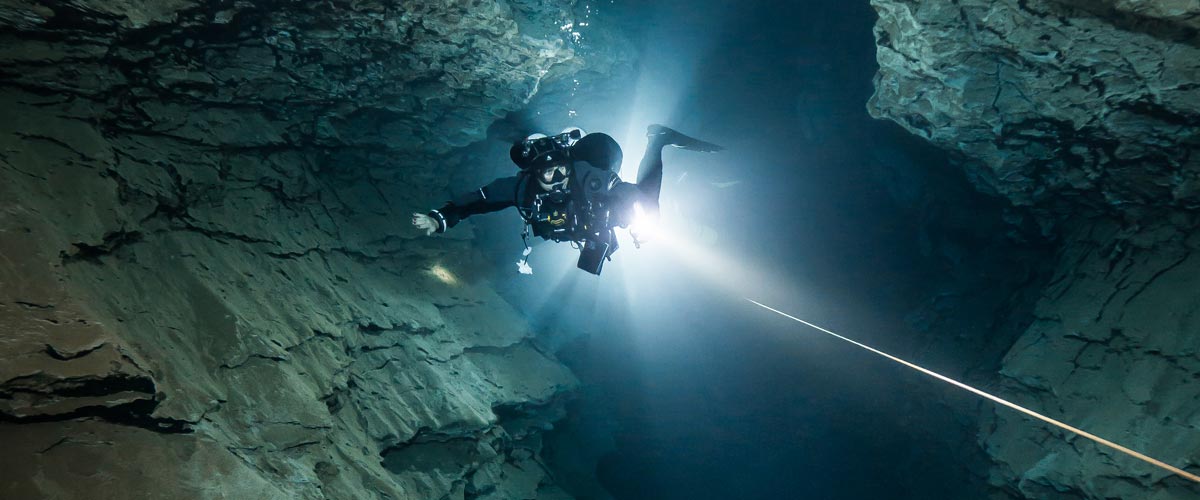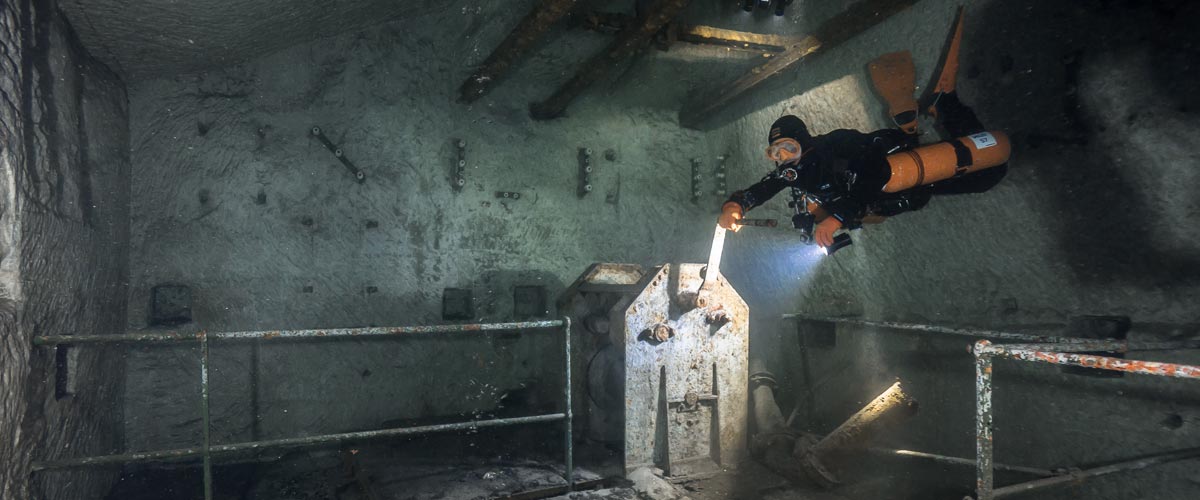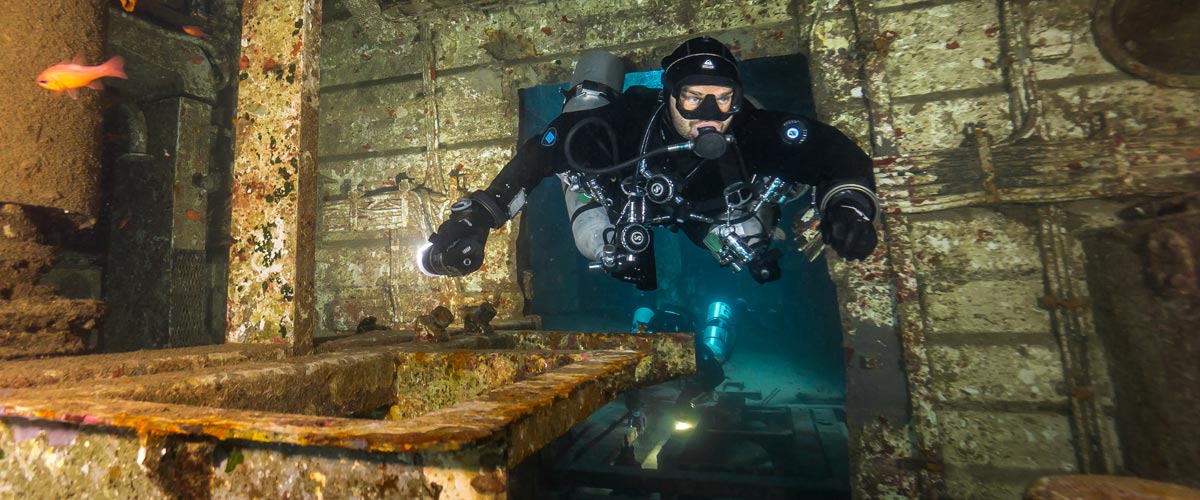Dive Training Blogs
Protect your ears as the pressure builds: Barotrauma and other ear problems
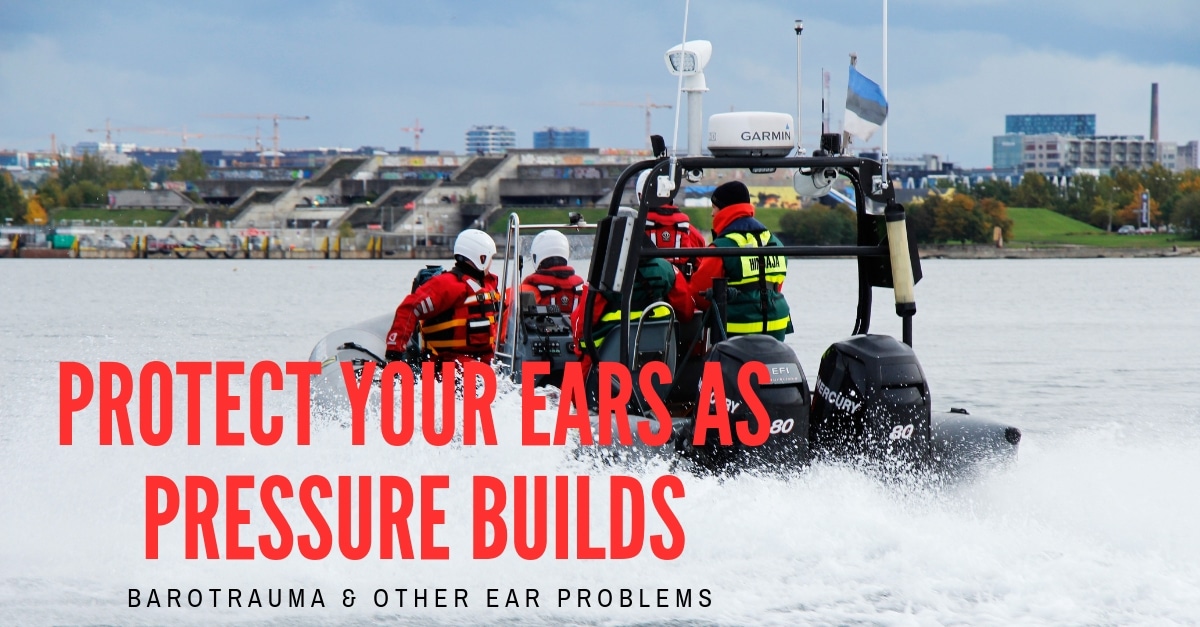
By: Gemma Smith
When you ask people who don’t dive what they think the most common type of diving injury is, the answer is usually ‘The Bends!’. If not this then at least an imagined tale of a Jaws-type marine monster attacking innocent divers one by one. The real answer is actually a lot simpler, and significantly less Hollywood. The most common injury you will encounter as a diver over a lifetime will be related to your ears.
The ears are an incredibly complex piece of our bodies. It is important we understand how to protect them. To do this, we need to first have a basic understanding of how they work. In very simple terms, the ear is actually formed from three areas: the outer ear, middle ear, and inner ear.
Outer Ear
The outer ear is what we see in ourselves and each other when we think of ‘ears’. It is made up of two parts, the pinna, and the ear canal.
Pinna
The pinna is the cartilaginous, flesh-covered flap located on each side of our heads. While the ear is incredibly multifaceted and involved, most of the clever design features are located internally. The pinna is actually the only part of the ear which is externally visible to us. Its job is simple but vital: to collect sound waves and channel them down the external ear canal. It also channels water into and out of the ear. Its cleverly engineered shape is not for nothing. Sound waves that are approaching us from behind are partially shielded by this outer fleshy area. This helps us to better determine the location the sound has come from. This is what helps us judge whether the origin of the sound is from behind or in front of us.
Ear canal
The ear canal is just a few centimetres long in adults and has a slight S-curve to it. The outer portion of the ear canal is covered by a thin layer of skin containing glands. These glands are responsible for the production of earwax. Thin hairs are also found covering the skin near the ear canal. It is this dynamic duo of tiny hairs and ear wax that is crucial in catching airborne particles. Dirt and detritus are caught before they have a chance to reach the middle and inner ear.
The Middle Ear
Following the twisting ear canal inwards leads us to the eardrum, more technically known as the tympanic membrane. It is this membrane that separates the middle ear from the outer ear. Within this middle ear are located the body’s three smallest bones – the malleus, incus, and stapes. As divers, this is the area we are most concerned with. It is this air-filled chamber that is more likely to give us trouble than anything else over the course of our diving life. Connecting our middle ear to the back of the throat are the Eustachian tubes. These little tubes allow us to keep the pressure between the middle ear and the outside environment equalised. This prevents any pain or discomfort from occurring. The underwater swallowing or yawning we see divers do is to allow this equalisation to occur.
The Inner Ear
Last, but definitely not least, we come to the inner ear. This is the part of the ear deepest within our bodies. Within the inner ear is the cochlea. This is the part of the ear actually responsible for hearing. It converts the vibrations from sounds into what we eventually hear. The cochlea is also noteworthy as it contains fluid-filled chambers. This can cause serious issues if any rupturing were to occur. The seeping of fluid from the inner ear to the middle ear is not something any diver would ever want to risk happening. Aside from the obvious discomfort, anything that causes us to feel dizzy or disoriented underwater is downright dangerous. This is just one of several reasons why you should never ever force equalisation to occur.
So now we understand all the main different components that make up our ears. From here we can start to look at the best ways to protect them. Diving puts us in a physically very different environment than the land-based one we are used to. By being aware of the risks and differences in this new world, we can greatly limit any possible issues that may occur. Let’s look at a few of the most common ear problems we may encounter when submerging:
Barotraumas
When we descend under the water, the most physically obvious difference to a diver is, of course, the pressure change. As we sink, the pressure of the water surrounding us increases. Any time the pressure around us changes, the chance of a barotrauma occurring rears its ugly head. Very simply, a barotrauma is any kind of pressure injury (baro comes from the Greek word for ‘pressure’, and trauma means ‘wound or injury’). If we don’t equalise as we go down then the pressure surrounding us increases while the pressure within our bodies stays the same. This causes an imbalance between the outer ear and the air filled chamber of the middle ear.
By gently pinching our noses and blowing, wiggling our jaw from side to side, or even just swallowing, we open our Eustachian tubes. As mentioned earlier, these tubes provide a direct link from the back of our throats to our middle ears. They are what allows us an easy equalisation of pressure. If we don’t do this, not only will it be painful, but we increase our chances of rupturing our middle ear with this pressure imbalance. Middle ear barotraumas are the most common injury in diving. They are also one of the easiest to prevent. Remember the golden rules:
- Equalise carefully on the surface before you even start to descend. Continue gently equalising every meter/few feet of your descent. This is especially important when shallow and the greatest pressure differences are occurring.
- Although most people learn the Vasalva technique when they first learn to dive (where you gently exhale against your pinched nose), it isn’t the right fit for everyone. There are other equally valid methods out there to allow you to equalise. Look at the Toynbee Maneuver (where you pinch your nose and swallow) or Frenzel Maneuver (where you pinch your nose and make the sound of the letter ‘K’). Don’t be afraid to try them if the Vasalva is just not working for you.
- If you are struggling to equalise as you descend try rising a little and trying again. This lessens the pressure slightly and may be all you need to allow you to continue a slow and controlled descent. Some people also find that descending in a more feet down position allows for an easier equalisation.
- Never ever force it.
- If you have a cold of any kind give the dive a miss. Do not think decongestant will solve the problem. It is worth remembering that while most pressure injuries with ears occur on descent, there is also a pressure change when we ascend at the end of a dive. This is one reason to be very wary of taking any decongestants before submerging. The effects will most likely wear off before the end of your dive, and you will still need to ascend regardless. If the Eustachian tubes are now blocked then the expanding air in your middle ear, caused by the now lessening pressure on ascent, has nowhere to go. This is a reverse block, and can have painful consequences.
- Without wanting to be the party-pooper in the room, smoking and alcohol are not good for you in any way as a diver. With regards to equalising, both of these things can irritate your mucus membranes. This can cause a blocking of your Eustachian tubes. Interestingly, for those of you having problems with your ears, consider cutting down on your dairy intake. Milk has been shown to increase the production of mucus. This may well be affecting your ability to comfortably equalise.
- If you have any pain or discomfort in your ears after the first dive give any planned second dives a miss. There will always be more diving days in the future. Healthy ears are not so easily come by, nor damaged ears that easily fixed. If the pain or discomfort persists after the dive it is worth getting it checked out by a doctor. The peace of mind of knowing that everything is good with your ears is worth the time taken!
Infections
Ears are funny, twisty, labyrinthine parts of our bodies. As such they are sadly prone to detritus lodging in them. This is one cause of ear infections. While not always specifically a diving related problem, it is one that can be exacerbated by in-water time. Otitis Externa, for example, is an outer ear infection. This is generally caused by frequent time in the water. The water causes the cells which line your ears to swell slightly. This can create an opening for opportunistic bacteria to enter. Here they find a warm, damp, welcoming place to multiply. Left untreated this can cause pain and swelling all along the jawline.
Realistically, infections are something you want to get sorted as soon as possible. As someone who has, sadly, had several ear infections over the years, I can attest to the extreme discomfort one feels with such an infection. Luckily it’s usually an easy fix, with ear drops prescribed by a doctor clearing up all but the worst cases. If not then antibiotics may be required. It does, unfortunately, mean it is more prudent to stay confined to dry land until it is all sorted.
All of us have ear problems from time to time. If you are finding that constant equalisation or pain issues are regularly preventing you diving though, think about going to see a specialist. A doctor focusing on possible ear, nose, and throat (ENT) troubles may well be all you need to figure out what your body is not liking about your current regime. There are also various devices available now, such as masks which cover your ears as well as your eyes and nose. With tubes connecting all the air pockets so you can still equalise, this keeps water out of your ears and minimises infection risks. Never risk your ears, but, as with most things in life, there is normally a way around most problems. Take the time to speak to experts and look at possible lifestyle changes.
To find out more about International Training, visit www.tdisdi.com.

Blogs
Intro to Tech: What is it about?
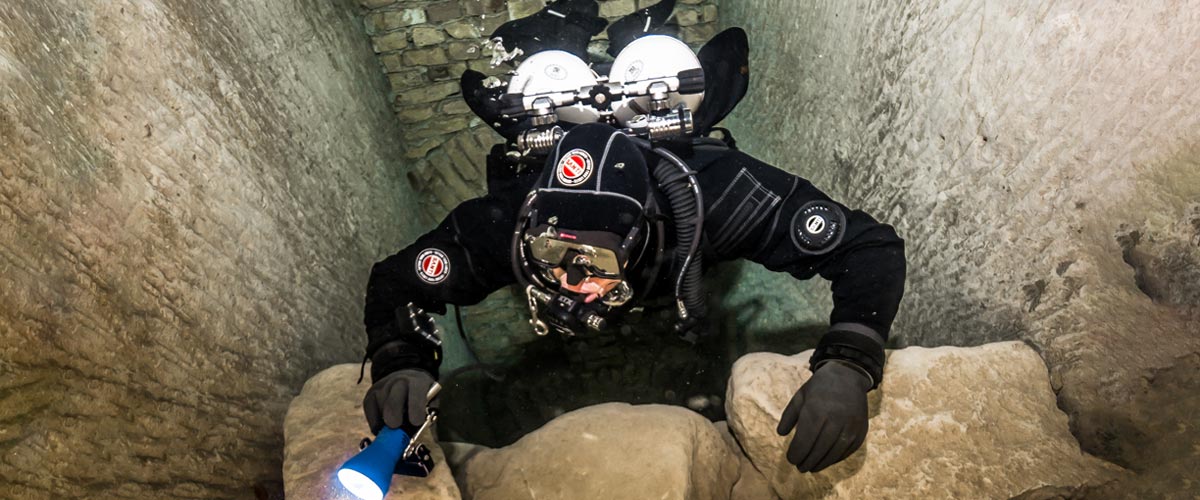
Article by José Pablo Mir
Pictures by Cezary Abramowski
The world of technical diving is exciting. It opens the door to new sites, depths, and bottom times. More importantly, it opens our minds to a new way of planning, facing, and experiencing dives, even those not purely technical.
Becoming a technical diver is a process, and like in other aspects of life, we should find the proper entry point that suits us best based on our knowledge and experience. The Introduction to Technical Diving course from TDI -the world’s largest and most recognized technical diving teaching organization- is the best option for divers who have yet to gain experience in the fundamental aspects of this new practice. The course’s content and its embrace of new techniques and technologies make it possible to acquire a solid foundation to learn and gain experience in this practice properly.
Becoming a technical diver is not something that happens overnight, whether deciding to become one or receiving a certification card stating we are now technical divers. It is a slow process extending farther away than any introductory course. It requires effort and dedication. But it will bring us satisfaction from day one -or two.
It is a matter of mentality
First, we must understand and accept that technical diving, involving greater depths, longer bottom times, exotic gases, virtual or real ceilings, and more, comes with higher levels of risk than the sport diving we have been practicing until now.
Although this discussion usually starts with a warning about risks, as I’ve done in the previous sentence, our practice is not a game of chance.
Technical diving is a rational activity that requires maturity and good judgment, and we will put everything into ensuring that each dive is a successful one -meaning we return from it safe and sound. With this understanding, we will strive to establish a mental attitude more aligned with our practice and its realities.
This new “technical diver” mindset we will develop will lead us to be more cautious in our executions, more analytical in our plans, more rational in our strategies, and more detailed in our procedures.
Experience will keep teaching us to know ourselves better, to keep our anxiety and other emotions under control, and to manage our impulses. Over time, our senses will sharpen, and we will be more attentive to the particulars of the situation we find ourselves in.
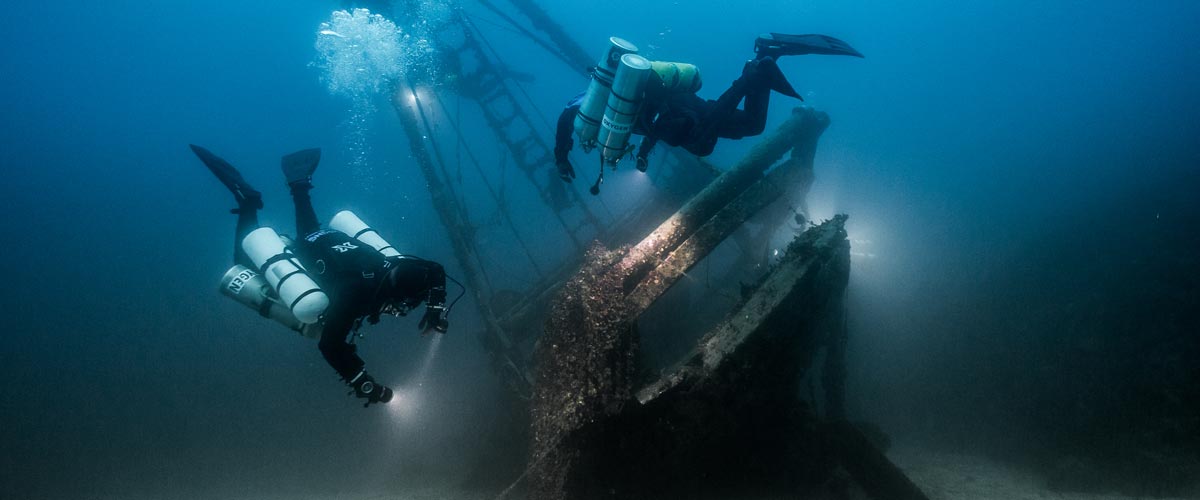
Strategies and procedures
Our strategies, those broad guiding lines tracing the path to follow, from how to approach planning to where, with what, and how we are willing to get there, will be more specific and more practical. Not because they magically become so, but because we will consciously and deliberately frame them that way.
We will establish clear, concise, and realistic procedures. Not only for the undesirable situations that may present themselves but also for those that are part of our dive objectives.
Even though, as technical divers, we often use equipment different from what we were previously accustomed to, it is essential to note that the gear does not make the diver. In a way, we could consider such equipment as the necessary tools to implement what our goal seeks to achieve, according to our strategies and procedures.
Technique plays an important role
We must put our greatest effort into learning and perfecting the different techniques we will be acquiring. Buoyancy, trim, propulsion, cylinder handling, deploying DSMBs and lift bags, valve drills, and more are essential skills we must begin to master to progress in our art. What we cannot do, when we need to do it, can harm us.
Our techniques must be effective and achieve the purpose for which they were devised. But they must also be efficient and require the least resources possible, including the time they take and the effort they demand. Effectiveness and efficiency will prevail over beauty and other considerations that may come to mind, although none of them should be mutually exclusive. A technique executed efficiently and effectively tends to have an inherent beauty.
Refining techniques is a lifelong mission. Some of them will be easy to master from the go; others, on the other hand, will be our life mission and will require many repetitions just to resemble the idea we have in mind of how they should be executed.
We must consider the environment
Our learning, the needs and musts of the practice we engage in, the experience we gradually gain, our strategies and procedures, and even our equipment and tools change with the environment.
Diving in the ocean, everything about us must be suitable for ocean dives. Conditions there rarely emulate those found in a pool, lake, or river. Variable winds and currents, greater depths, visibility conditions, other divers with uncertain skills around us, marine life, maritime traffic, distance from the coast, and many other factors add complexity and uncertainty.
It is never necessary to master the pool on the first day, but planning and aspiring to gradually cope with the ocean’s conditions is essential.
The cost of good training
We are aware that our resources are often scarce in relation to the possibilities of use we could give them if they were not. To a greater or lesser extent, we are part of the economic reality in which we are embedded.
Fortunately, the cost of good technical diver training is not an entry barrier. Comparing training and equipment costs, we see that the former are generally lower. Yes, lower cost for personalized service, essential to our future
performance and safety, than for a series of mass-produced products that are mere, albeit necessary, tools for an end.
The value of good training
The value of the training we received encompasses a range of characteristics, from emotional and methodological to technical and technological. TDI and its Introduction to Technical Diving course offer a deep and modern approach, with a teaching strategy that aims to create thinking divers, not merely obedient ones.
As technical divers, our knowledge is our primary tool. In this type of activity, what we don’t know can harm us.
Is this course optional?
Unfortunately, the fact that this Introduction to Technical Diving course is not a prerequisite for any subsequent training is an invitation to consider it optional. And we all know what usually happens to “optional” under budget constraints.
However, this course should be seen as optional only by those divers who are somehow familiar with the use of technical equipment, who have a mindset more in line with the requirements of this type of diving, who plan and execute the dives the proper “technical” way, who know their gas consumption rate, who are not intimidated by non-decompression tables, who feel comfortable using their dive computers, and know the techniques and have at least an acceptable level of buoyancy, positioning, and propulsion. Those can go straight to a more advanced training course, such as TDI’s Advanced Nitrox.
We must ask ourselves whether or not we are in that group.
Remember our goal: to have fun
Recreational diving is our passion. Jumping into the water carrying heavy equipment and having properly dotted our I’s and crossed our T’s have only one ultimate goal: fun. This is the activity we have chosen as a hobby. We must enjoy it; it must give us pleasure and make us vibrate.
Having a good time is not optional!
Blogs
Four opportunities to go pro in 2024 with Dive Friends Bonaire
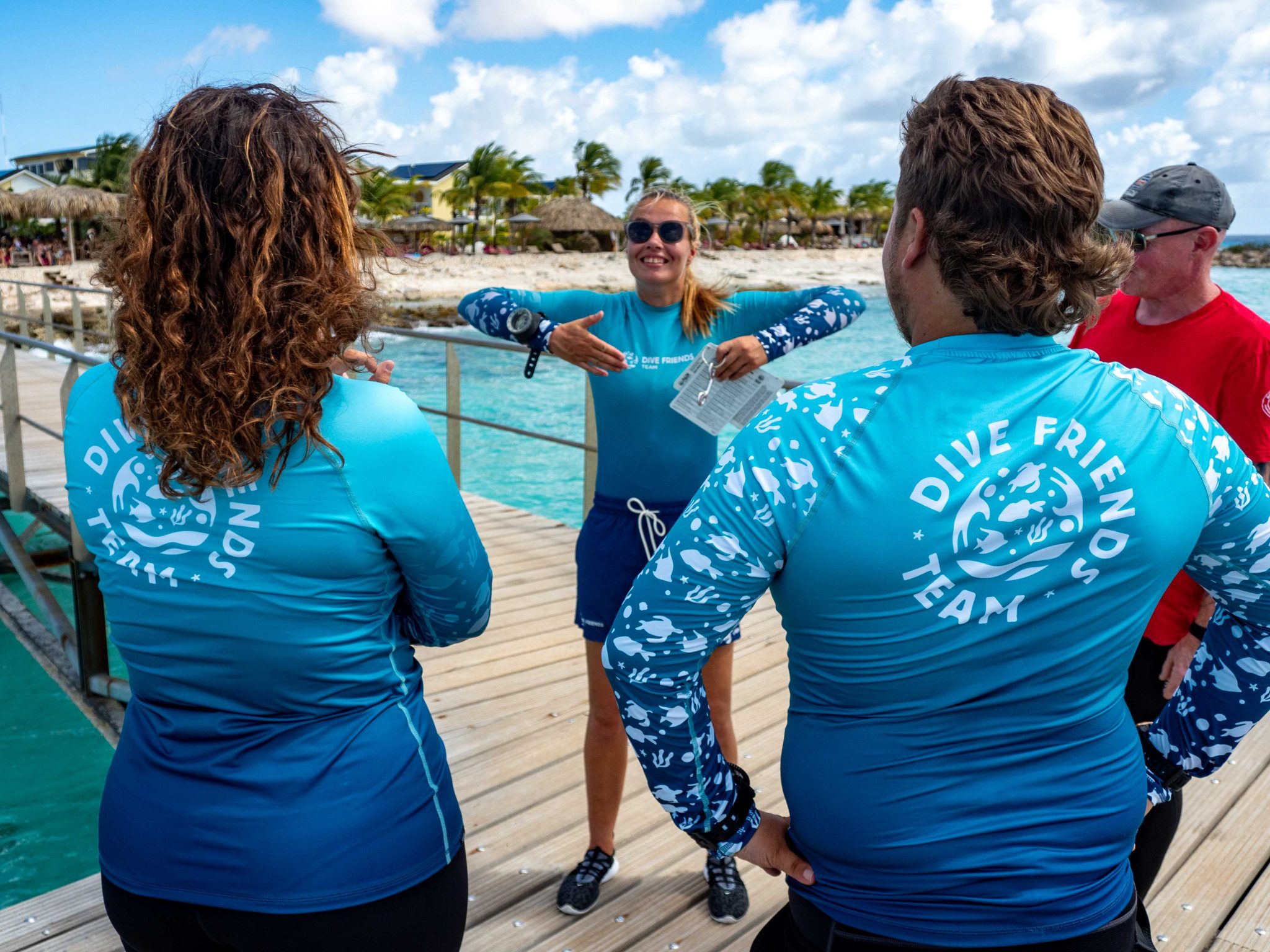
Dive Friends teaches the Instructor Development Course (IDC) several times a year to students who are eager to share their passion for diving with the world.
Dive Friends is known for the personal approach throughout the course. Their in-house course director will lead the students through every essential step, mentoring them to achieve their fullest potential as a dive instructor.
Applications for the following IDC start dates are now open:
- 12 April
- 5 July,
- 20 September
- 29 November
Partnership with Casita Palma
If the student opts for the IDC-Deluxe or IDC-Supreme package, their accommodation will be arranged for them at Casita Palma. This small and quiet resort is within walking distance from Dive Friends Bonaire’s main dive shop location and has everything you need to relax after an intense day of IDC training. Breakfast is included, so the student will always be fuelled and ready for their day.
Contact Dive Friends Bonaire’s Course Director Eddy for more information: coursedirector@divefriendsbonaire.com.
-

 News3 months ago
News3 months agoHone your underwater photography skills with Alphamarine Photography at Red Sea Diving Safari in March
-

 News2 months ago
News2 months agoCapturing Critters in Lembeh Underwater Photography Workshop 2024: Event Roundup
-

 Marine Life & Conservation Blogs2 months ago
Marine Life & Conservation Blogs2 months agoCreature Feature: Swell Sharks
-

 Blogs2 months ago
Blogs2 months agoMurex Resorts: Passport to Paradise!
-

 Blogs2 months ago
Blogs2 months agoDiver Discovering Whale Skeletons Beneath Ice Judged World’s Best Underwater Photograph
-

 Gear News3 months ago
Gear News3 months agoBare X-Mission Drysuit: Ideal for Both Technical and Recreational Divers
-

 Gear Reviews2 months ago
Gear Reviews2 months agoGear Review: Oceanic+ Dive Housing for iPhone
-

 Marine Life & Conservation2 months ago
Marine Life & Conservation2 months agoSave the Manatee Club launches brand new webcams at Silver Springs State Park, Florida















